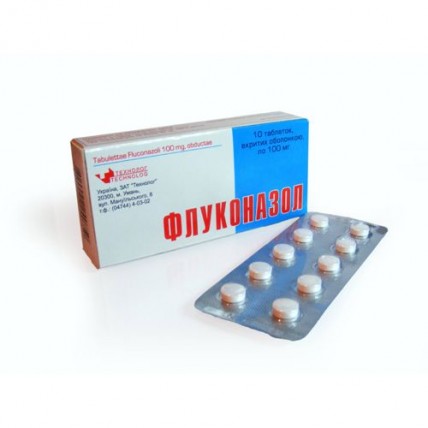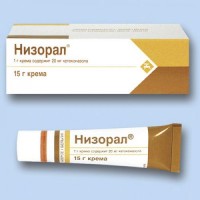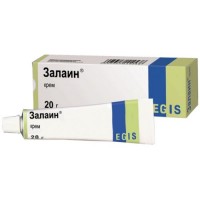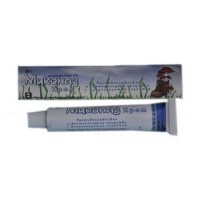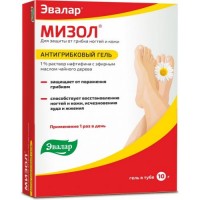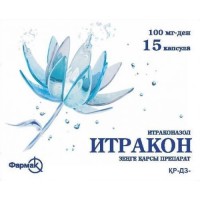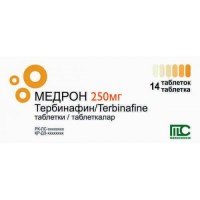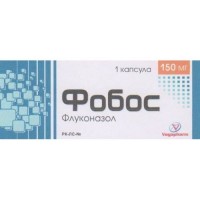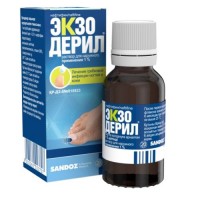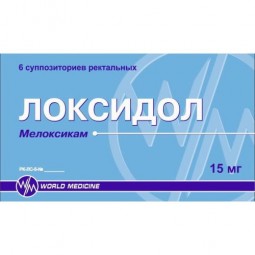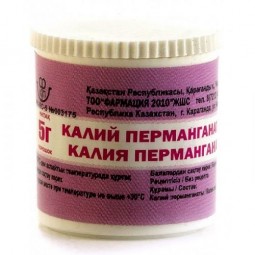Fluconazole 10s 100 mg coated tablets
- $9.70
Out Of Stock
The instruction
for medical use
of Flukonazol Torgovoye medicine a name
Flukonazol
Mezhdunarodnoye the unlicensed
name Flukonazol Lekarstvennaya
the Tablet form, coated, 50 mg, 100 mg, 150 mg
Structure
One tablet contains
active agent - flukonazol 50 mg, 100 mg or 150 mg,
excipients: lactoses monohydrate, potato starch, povidone 25 (Kollidon 25), silicon dioxide colloidal, magnesium stearate.
structure of a cover: gipromelloza, titan E 171 dioxide, talc, polyethyleneglycol 6000, polysorbate 80.
The description
of the Tablet, coated, color, white or white with a cream shade, with a biconvex surface.
Pharmacotherapeutic group
Antifungal means for system use. Triazole derivatives.
ATX J02AC01 code.
The pharmacological
Pharmacokinetics Absorption properties - high (food does not influence absorption speed). Bioavailability - 90%. The maximum concentration of drug after intake is reached in 0.5-1.5 hours.
Communication with proteins of blood plasma - 11-12%. Concentration in blood plasma is in direct dependence on a dose. Equilibrium concentration is reached for 4-5 days of reception (at administration of drug of 1 times a day).
Reception in the first day of the shock dose twice exceeding a usual daily dose allows to reach equilibrium 90% of concentration for the second day.
Well gets into all liquids of an organism. Concentration of active agent in breast milk, articulate liquid, saliva, a phlegm and peritoneal liquid are similar to that in plasma. Constant values in a vaginal secret are reached in 8 hours and keep at this level not less than 24 h.
At patients with fungal meningitis the level of a flukonazol in cerebrospinal fluid reaches 80% of its concentration in blood plasma.
In stalemate liquid, epidermis and a corneal layer (selection accumulation) the concentration exceeding serumal are reached. Flukonazol collects in a corneal layer of skin. At administration of drug in a dose of 50 mg/days the concentration of a flukonazol in a corneal layer in 12 days makes 73 mkg/g, and in 7 days after completion of treatment of 5.8 mkg/g. At use of a dose of 150 mg once a week concentration of a flukonazol in a corneal layer for the seventh day reached 23.4 mkg/g, and in 7 days after reception of the second dose of 7.1 mkg/g. Concentration of a flukonazol in nails after 4-month use in a dose of 150 mg makes 4.05 mkg/g in healthy nails and 1.8 mkg/g once a week – in struck. In 6 months after the end of therapy flukonazol still was defined in nails.
Drug is completely removed by kidneys, and about 80% of the entered dose come to light in urine in not changed state. The clearance of a flukonazol is proportional to clearance of creatinine. Tsirkuliruyemy metabolites are not revealed.
Long plasma elimination half-life of blood (about 30 hours) allows to accept flukonazol disposable in vaginal candidiasis and to apply once a day or once a week in other diseases caused by sensitive mushrooms.
A pharmacodynamics
Antifungal means of a class of triazolny connections, powerful selection inhibitor of synthesis of sterols in cells of mushrooms.
Possesses highly specific action, inhibiting activity of enzymes of the mushrooms dependent on P450 cytochrome. Blocks transformation of a lanosterol of cells of mushrooms into ergosterol, increases permeability of a cellular membrane, breaks its growth and replication. Flukonazol, being high-selective for P450 cytochrome of mushrooms, practically does not oppress these enzymes in a human body (in comparison with itrakonazoly, Clotrimazolum, econazoly and ketokonazoly to a lesser extent suppresses oxidizing processes, dependent on P450 cytochrome, in microsomes of a liver of the person). Has no antiadrogenny activity. It is active in the opportunistic mycoses including caused by Candida spp. (including generalized forms of candidiasis against the background of an immunosuppression), Cryptococcus Neoformans and Coccidioides immitis (including intracranial infections), Microsporum spp. and TrichophytoN spp, in the endemic mycoses caused by Blastomyces dermatidis, Histoplasma capsulatum (including at an immunosuppression).
Therapy flukonazoly did not affect concentration in testosterone blood plasma at men and steroids at women of childbearing age. Flukonazol had no clinically significant impact on levels of endogenous steroids and their reaction to stimulation by adrenocorticotropic hormone (AKTG) at men.
Indications
- a cryptococcosis (the systemic lesions caused by Cryptococcus fungi), including meningitis, sepsis, infections of lungs and skin, as at patients with the normal immune response, and at patients with various forms of an immunosuppression (including at patients with AIDS, at organ transplantation)
- prevention of a cryptococcal infection at patients with AIDS
- generalized candidiasis: a kandidemiya, disseminate candidiasis (with defeat of endocardium, abdominal organs, respiratory organs, eyes and urinogenital bodies), including at the patients receiving a course of cytostatic or immunosuppressive therapy and also in the presence of other factors contributing to their development - treatment and prevention
- candidiasis of mucous membranes: oral cavities, drinks, a gullet, a kandiduriya, the skin and mucous and chronic oral atrophic candidiasis (connected with carrying dentures), noninvasive bronchopulmonary candidiases
- genital candidiasis, vaginal candidiasis (sharp and recurrent), a candidosis balanitis
- prevention of fungal infections at patients with malignant tumors against the background of chemotherapy or radiation therapy, prevention of a recurrence of oropharyngeal candidiasis at patients with AIDS
- mycoses of skin of various localization: stop, inguinal area, an onychomycosis, a chromophytosis, deprive, skin candidosis infections.
- deep endemic mycoses (koktsidiomikoz, a sporotrichosis and histoplasmosis) at patients with normal immunity
Accept the Route of administration and doses inside, daily, 1 time a day.
The daily dose depends by nature and weights of a fungal infection and is defined individually. Duration of treatment depends on clinical and mycologic effect.
Adults.
In cryptococcal infections in the first day, as a rule, appoint 400 mg, and then continue treatment in a dose of 200-400 mg once a day. Treatment duration, as a rule, is 6-8 weeks. For prevention of a recurrence of cryptococcal meningitis at patients with AIDS (after end of a full course of primary treatment) therapy in a dose of 200 mg can be continued for a long time.
In candidosis infections the dose makes 400 mg in the first day, then on 200 mg a day, if necessary the dose can be increased up to 400 mg a day. Duration of therapy depends on clinical performance.
In oropharyngeal candidiasis – on 50-100 mg once a day within 7-14 days or if necessary – longer time. In atrophic candidiasis of a mucous membrane of an oral cavity usually appoint in a dose 50 mg within 14 days, in other candidosis infections of mucous membranes once a day (except for vaginal candidiasis) the effective dose usually makes 50-100 mg lasting treatment of 14-30 days
In vaginal candidiasis and a balanitis accept once in a dose 150 mg
In a skin infection, including mycoses of feet and skin of inguinal area, the recommended dose makes 150 mg once a week or 50 mg once a day. Therapy duration usually is 2-4 weeks, however in mycoses of feet longer therapy can be required (up to 6 weeks). In a chromophytosis the recommended dose makes 50 mg within 2-4 weeks once a day.
In an onychomycosis the recommended dose makes 150 mg once a week.
Treatment should be continued before substitution of the infected nail (growth of not infected nail).
For prevention of fungal infections at patients with reduced function of immunity the dose makes 50 mg once a day while the patient treats risk group
to Children from 6 years.
In candidiasis of mucous membranes – 3-6 mg on 1 kg of body weight a day, not less than 3 weeks,
In system candidiases – 6-12 mg on 1 kg of body weight a day, within 10-12 weeks (before laboratory confirmation of lack of the activator in liquor).
The daily dose for children should not exceed a dose for adults.
For elderly patients with a renal failure at single dose the change of a dose is not required. At repeated reception drug appoint from 50 to 400 mg in an initial dose. After that the daily dose (depending on indicators of clearance of creatinine) is determined by the table:
Clearance of creatinine, ml/min.
Percent of the recommended dose
& gt,
50,100%
of 11-50
50%
the Sick, regularly being on dialysis
One dose after each dialysis
Doses and duration of treatment are defined individually.
Side effects
Often
- a loss of appetite, nausea, diarrhea, a constipation, a meteorism, abdominal pains, a toothache
- a headache, dizziness, fatigue
- skin rash
Seldom
- an abnormal liver function (ikterichnost of scleras, jaundice, a hyperbilirubinemia, increase in activity of alaninaminotranspherase, an asparaginaminotransferaza and alkaline phosphatase)
- hepatotoxicity, including isolated cases with a lethal outcome at persons with serious associated diseases (AIDS, cancer)
- spasms
- a mnogoformny exudative erythema (including Stephens-Johnson's syndrome), a toxic epidermal necrolysis (Lyell's disease), anaphylactoid reactions
- a leukopenia, thrombocytopenia (bleedings, petechias), a neutropenia, an agranulocytosis, a hypercholesterolemia, a gipertriglitseridemiya, a hypopotassemia
- a renal failure
- an alopecia
- increase in an interval of QT at the ECG, blinking/trembling of ventricles
of the Contraindication
- the increased individual sensitivity to a flukonazol or triazolny compounds and other components of drug
- simultaneous use with terfenadiny and astemizoly, tsizapridy
- pregnancy and the period of a lactation
- children's age up to 6 years
Medicinal interactions
At simultaneous use of a flukonazol with coumarinic anticoagulants it is necessary to control a prothrombin time as the efficiency of the last increases.
With gipoglikemiziruyushchy means – development of a hypoglycemia is possible.
With rifampicin - the dose of a flukonazol should be increased as there is a decrease in absorption by 25% and duration of elimination half-life of a flukonazol for 20%.
With a zidovudine - increase in their concentration in blood is possible.
With terfenadiny or tsizapridy the risk of developing of arrhythmias, including paroxysms of ventricular tachycardia increases.
With theophylline it is necessary to watch symptoms of overdose of the last as the period of its semi-removal is extended.
With rifabutiny and cyclosporine – development of a uveitis is possible.
With takrolimusy - increases serumal concentration of the last
With Phenytoinum - monitoring of concentration of the last in blood plasma is necessary, substantially its efficiency so increases.
With a hydrochlorothiazide – can lead to increase in concentration of a flukonazol in plasma up to 40%.
The special
instructions Treatment need to be continued before emergence of kliniko-hematologic remission of a disease. The premature termination of treatment leads to a recurrence. Treatment can be begun before obtaining results of crops or other laboratory analyses, with the subsequent correction of fungicide therapy by the received results of researches.
During treatment it is necessary to control blood indicators, function of kidneys and a liver.
When developing renal failures and a liver it is necessary to stop administration of drug. Hepatotoxic action of a flukonazol is usually reversible, symptoms disappear after the therapy termination.
When developing skin rashes at patients with an immunosuppression the careful observation is necessary, and in case of progressing of skin reaction it is necessary to stop treatment (danger of development of a syndrome of Stephens-Johnson, a Lyell's disease).
Control of the prothrombin ratio at simultaneous use with anticoagulants of a coumarinic row is necessary.
It is recommended to exercise control of concentration of cyclosporine in blood at the patients with the replaced kidney receiving flukonazol.
Features of influence of medicine on ability to run the vehicle or potentially dangerous mechanisms
With care are appointed to drivers of transport and persons whose work demands exact coordination of movements.
Overdose
Symptoms: nausea, abdominal pain, diarrhea, meteorism, headache, dizziness, hallucinations, skin rash, anaphylactic reactions.
Treatment: symptomatic therapy (gastric lavage, maintenance therapy), an artificial diuresis can accelerate drug removal.
The form of release and packing
On 10 tablets (for dosages of 50 mg and 100 mg) place in blister strip packaging from a film of aluminum polyvinylchloride foil. On 1 planimetric packing together with the instruction for medical use in the state and Russian languages place in a pack from cardboard.
On 1 or 2 tablets (for a dosage of 150 mg) place in blister strip packaging from a film of aluminum polyvinylchloride foil.
1 or 2 planimetric packs on 1 tablet, or on 1 planimetric packing on the 2nd tablet together with the instruction for medical use in the state and Russian languages place in a pack from cardboard.
To Store storage conditions in the dry, protected from light place at a temperature not over 30 of 0C.
To store out of children's reach!
3 years
not to use a period of storage after the expiration date specified on packing.
Prescription status
According to the prescription
Technolog CIAO Producer.
20300, Ukraine, Uman of the Cherkassk region, Manuilsky St., 8.
The name and the country of the owner of the registration certificate
CIAO Technolog, Ukraine
the Address of the organization accepting in the territory of the Republic of Kazakhstan claims from consumers on quality of products (goods) of Medicus Centre LLP 050000, Almaty, Mussorgsky St., 2atel: +007 (7272) 71-48-12
to Develop 71 48 13 e-mail-mail
for medical use
of Flukonazol Torgovoye medicine a name
Flukonazol
Mezhdunarodnoye the unlicensed
name Flukonazol Lekarstvennaya
the Tablet form, coated, 50 mg, 100 mg, 150 mg
Structure
One tablet contains
active agent - flukonazol 50 mg, 100 mg or 150 mg,
excipients: lactoses monohydrate, potato starch, povidone 25 (Kollidon 25), silicon dioxide colloidal, magnesium stearate.
structure of a cover: gipromelloza, titan E 171 dioxide, talc, polyethyleneglycol 6000, polysorbate 80.
The description
of the Tablet, coated, color, white or white with a cream shade, with a biconvex surface.
Pharmacotherapeutic group
Antifungal means for system use. Triazole derivatives.
ATX J02AC01 code.
The pharmacological
Pharmacokinetics Absorption properties - high (food does not influence absorption speed). Bioavailability - 90%. The maximum concentration of drug after intake is reached in 0.5-1.5 hours.
Communication with proteins of blood plasma - 11-12%. Concentration in blood plasma is in direct dependence on a dose. Equilibrium concentration is reached for 4-5 days of reception (at administration of drug of 1 times a day).
Reception in the first day of the shock dose twice exceeding a usual daily dose allows to reach equilibrium 90% of concentration for the second day.
Well gets into all liquids of an organism. Concentration of active agent in breast milk, articulate liquid, saliva, a phlegm and peritoneal liquid are similar to that in plasma. Constant values in a vaginal secret are reached in 8 hours and keep at this level not less than 24 h.
At patients with fungal meningitis the level of a flukonazol in cerebrospinal fluid reaches 80% of its concentration in blood plasma.
In stalemate liquid, epidermis and a corneal layer (selection accumulation) the concentration exceeding serumal are reached. Flukonazol collects in a corneal layer of skin. At administration of drug in a dose of 50 mg/days the concentration of a flukonazol in a corneal layer in 12 days makes 73 mkg/g, and in 7 days after completion of treatment of 5.8 mkg/g. At use of a dose of 150 mg once a week concentration of a flukonazol in a corneal layer for the seventh day reached 23.4 mkg/g, and in 7 days after reception of the second dose of 7.1 mkg/g. Concentration of a flukonazol in nails after 4-month use in a dose of 150 mg makes 4.05 mkg/g in healthy nails and 1.8 mkg/g once a week – in struck. In 6 months after the end of therapy flukonazol still was defined in nails.
Drug is completely removed by kidneys, and about 80% of the entered dose come to light in urine in not changed state. The clearance of a flukonazol is proportional to clearance of creatinine. Tsirkuliruyemy metabolites are not revealed.
Long plasma elimination half-life of blood (about 30 hours) allows to accept flukonazol disposable in vaginal candidiasis and to apply once a day or once a week in other diseases caused by sensitive mushrooms.
A pharmacodynamics
Antifungal means of a class of triazolny connections, powerful selection inhibitor of synthesis of sterols in cells of mushrooms.
Possesses highly specific action, inhibiting activity of enzymes of the mushrooms dependent on P450 cytochrome. Blocks transformation of a lanosterol of cells of mushrooms into ergosterol, increases permeability of a cellular membrane, breaks its growth and replication. Flukonazol, being high-selective for P450 cytochrome of mushrooms, practically does not oppress these enzymes in a human body (in comparison with itrakonazoly, Clotrimazolum, econazoly and ketokonazoly to a lesser extent suppresses oxidizing processes, dependent on P450 cytochrome, in microsomes of a liver of the person). Has no antiadrogenny activity. It is active in the opportunistic mycoses including caused by Candida spp. (including generalized forms of candidiasis against the background of an immunosuppression), Cryptococcus Neoformans and Coccidioides immitis (including intracranial infections), Microsporum spp. and TrichophytoN spp, in the endemic mycoses caused by Blastomyces dermatidis, Histoplasma capsulatum (including at an immunosuppression).
Therapy flukonazoly did not affect concentration in testosterone blood plasma at men and steroids at women of childbearing age. Flukonazol had no clinically significant impact on levels of endogenous steroids and their reaction to stimulation by adrenocorticotropic hormone (AKTG) at men.
Indications
- a cryptococcosis (the systemic lesions caused by Cryptococcus fungi), including meningitis, sepsis, infections of lungs and skin, as at patients with the normal immune response, and at patients with various forms of an immunosuppression (including at patients with AIDS, at organ transplantation)
- prevention of a cryptococcal infection at patients with AIDS
- generalized candidiasis: a kandidemiya, disseminate candidiasis (with defeat of endocardium, abdominal organs, respiratory organs, eyes and urinogenital bodies), including at the patients receiving a course of cytostatic or immunosuppressive therapy and also in the presence of other factors contributing to their development - treatment and prevention
- candidiasis of mucous membranes: oral cavities, drinks, a gullet, a kandiduriya, the skin and mucous and chronic oral atrophic candidiasis (connected with carrying dentures), noninvasive bronchopulmonary candidiases
- genital candidiasis, vaginal candidiasis (sharp and recurrent), a candidosis balanitis
- prevention of fungal infections at patients with malignant tumors against the background of chemotherapy or radiation therapy, prevention of a recurrence of oropharyngeal candidiasis at patients with AIDS
- mycoses of skin of various localization: stop, inguinal area, an onychomycosis, a chromophytosis, deprive, skin candidosis infections.
- deep endemic mycoses (koktsidiomikoz, a sporotrichosis and histoplasmosis) at patients with normal immunity
Accept the Route of administration and doses inside, daily, 1 time a day.
The daily dose depends by nature and weights of a fungal infection and is defined individually. Duration of treatment depends on clinical and mycologic effect.
Adults.
In cryptococcal infections in the first day, as a rule, appoint 400 mg, and then continue treatment in a dose of 200-400 mg once a day. Treatment duration, as a rule, is 6-8 weeks. For prevention of a recurrence of cryptococcal meningitis at patients with AIDS (after end of a full course of primary treatment) therapy in a dose of 200 mg can be continued for a long time.
In candidosis infections the dose makes 400 mg in the first day, then on 200 mg a day, if necessary the dose can be increased up to 400 mg a day. Duration of therapy depends on clinical performance.
In oropharyngeal candidiasis – on 50-100 mg once a day within 7-14 days or if necessary – longer time. In atrophic candidiasis of a mucous membrane of an oral cavity usually appoint in a dose 50 mg within 14 days, in other candidosis infections of mucous membranes once a day (except for vaginal candidiasis) the effective dose usually makes 50-100 mg lasting treatment of 14-30 days
In vaginal candidiasis and a balanitis accept once in a dose 150 mg
In a skin infection, including mycoses of feet and skin of inguinal area, the recommended dose makes 150 mg once a week or 50 mg once a day. Therapy duration usually is 2-4 weeks, however in mycoses of feet longer therapy can be required (up to 6 weeks). In a chromophytosis the recommended dose makes 50 mg within 2-4 weeks once a day.
In an onychomycosis the recommended dose makes 150 mg once a week.
Treatment should be continued before substitution of the infected nail (growth of not infected nail).
For prevention of fungal infections at patients with reduced function of immunity the dose makes 50 mg once a day while the patient treats risk group
to Children from 6 years.
In candidiasis of mucous membranes – 3-6 mg on 1 kg of body weight a day, not less than 3 weeks,
In system candidiases – 6-12 mg on 1 kg of body weight a day, within 10-12 weeks (before laboratory confirmation of lack of the activator in liquor).
The daily dose for children should not exceed a dose for adults.
For elderly patients with a renal failure at single dose the change of a dose is not required. At repeated reception drug appoint from 50 to 400 mg in an initial dose. After that the daily dose (depending on indicators of clearance of creatinine) is determined by the table:
Clearance of creatinine, ml/min.
Percent of the recommended dose
& gt,
50,100%
of 11-50
50%
the Sick, regularly being on dialysis
One dose after each dialysis
Doses and duration of treatment are defined individually.
Side effects
Often
- a loss of appetite, nausea, diarrhea, a constipation, a meteorism, abdominal pains, a toothache
- a headache, dizziness, fatigue
- skin rash
Seldom
- an abnormal liver function (ikterichnost of scleras, jaundice, a hyperbilirubinemia, increase in activity of alaninaminotranspherase, an asparaginaminotransferaza and alkaline phosphatase)
- hepatotoxicity, including isolated cases with a lethal outcome at persons with serious associated diseases (AIDS, cancer)
- spasms
- a mnogoformny exudative erythema (including Stephens-Johnson's syndrome), a toxic epidermal necrolysis (Lyell's disease), anaphylactoid reactions
- a leukopenia, thrombocytopenia (bleedings, petechias), a neutropenia, an agranulocytosis, a hypercholesterolemia, a gipertriglitseridemiya, a hypopotassemia
- a renal failure
- an alopecia
- increase in an interval of QT at the ECG, blinking/trembling of ventricles
of the Contraindication
- the increased individual sensitivity to a flukonazol or triazolny compounds and other components of drug
- simultaneous use with terfenadiny and astemizoly, tsizapridy
- pregnancy and the period of a lactation
- children's age up to 6 years
Medicinal interactions
At simultaneous use of a flukonazol with coumarinic anticoagulants it is necessary to control a prothrombin time as the efficiency of the last increases.
With gipoglikemiziruyushchy means – development of a hypoglycemia is possible.
With rifampicin - the dose of a flukonazol should be increased as there is a decrease in absorption by 25% and duration of elimination half-life of a flukonazol for 20%.
With a zidovudine - increase in their concentration in blood is possible.
With terfenadiny or tsizapridy the risk of developing of arrhythmias, including paroxysms of ventricular tachycardia increases.
With theophylline it is necessary to watch symptoms of overdose of the last as the period of its semi-removal is extended.
With rifabutiny and cyclosporine – development of a uveitis is possible.
With takrolimusy - increases serumal concentration of the last
With Phenytoinum - monitoring of concentration of the last in blood plasma is necessary, substantially its efficiency so increases.
With a hydrochlorothiazide – can lead to increase in concentration of a flukonazol in plasma up to 40%.
The special
instructions Treatment need to be continued before emergence of kliniko-hematologic remission of a disease. The premature termination of treatment leads to a recurrence. Treatment can be begun before obtaining results of crops or other laboratory analyses, with the subsequent correction of fungicide therapy by the received results of researches.
During treatment it is necessary to control blood indicators, function of kidneys and a liver.
When developing renal failures and a liver it is necessary to stop administration of drug. Hepatotoxic action of a flukonazol is usually reversible, symptoms disappear after the therapy termination.
When developing skin rashes at patients with an immunosuppression the careful observation is necessary, and in case of progressing of skin reaction it is necessary to stop treatment (danger of development of a syndrome of Stephens-Johnson, a Lyell's disease).
Control of the prothrombin ratio at simultaneous use with anticoagulants of a coumarinic row is necessary.
It is recommended to exercise control of concentration of cyclosporine in blood at the patients with the replaced kidney receiving flukonazol.
Features of influence of medicine on ability to run the vehicle or potentially dangerous mechanisms
With care are appointed to drivers of transport and persons whose work demands exact coordination of movements.
Overdose
Symptoms: nausea, abdominal pain, diarrhea, meteorism, headache, dizziness, hallucinations, skin rash, anaphylactic reactions.
Treatment: symptomatic therapy (gastric lavage, maintenance therapy), an artificial diuresis can accelerate drug removal.
The form of release and packing
On 10 tablets (for dosages of 50 mg and 100 mg) place in blister strip packaging from a film of aluminum polyvinylchloride foil. On 1 planimetric packing together with the instruction for medical use in the state and Russian languages place in a pack from cardboard.
On 1 or 2 tablets (for a dosage of 150 mg) place in blister strip packaging from a film of aluminum polyvinylchloride foil.
1 or 2 planimetric packs on 1 tablet, or on 1 planimetric packing on the 2nd tablet together with the instruction for medical use in the state and Russian languages place in a pack from cardboard.
To Store storage conditions in the dry, protected from light place at a temperature not over 30 of 0C.
To store out of children's reach!
3 years
not to use a period of storage after the expiration date specified on packing.
Prescription status
According to the prescription
Technolog CIAO Producer.
20300, Ukraine, Uman of the Cherkassk region, Manuilsky St., 8.
The name and the country of the owner of the registration certificate
CIAO Technolog, Ukraine
the Address of the organization accepting in the territory of the Republic of Kazakhstan claims from consumers on quality of products (goods) of Medicus Centre LLP 050000, Almaty, Mussorgsky St., 2atel: +007 (7272) 71-48-12
to Develop 71 48 13 e-mail-mail
